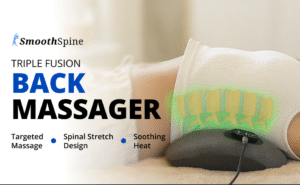Understanding Hand Swelling
Hand swelling is a buildup of fluid in the tissues, giving the hands a swollen or “puffy” appearance. This condition, called edema, may be localized to the hands only or associated with generalized edema. Several factors may cause this symptom.
Edema is defined as an excessive accumulation of interstitial fluid in the body’s tissues. In the case of swollen hands, this accumulation occurs in the soft tissues and can lead to an increase in the volume and size of the hands. Edema can be temporary and reversible or chronic and require medical intervention.
Causes of Swollen Hands
The causes of swollen hands are varied:
- Arthritis: Arthritis, especially rheumatoid arthritis, can cause swelling in the joints of the hands. In addition, this disease can also cause pain, stiffness (especially in the morning), difficulty moving the joint, and fever.
- Carpal tunnel syndrome: This causes swelling of the hands accompanied by tingling, painful compression of the nerve that runs through the wrist and palm.
- Excessive salt consumption: it can lead to water retention, which can cause swelling of the hands;
- Circulatory problems: Poor circulation occurs when a problem affects the circulatory system, reducing the supply of blood, oxygen, and nutrients to the body. This leads to swelling of the extremities (hands, feet, fingers);
- Injuries: trauma (bruises, sprains, fractures) or injuries to the hands can cause swelling.
- certain illnesses: certain illnesses, such as hypothyroidism, kidney disease, or heart problems, can also cause swelling in the hands;
- Medications: Some medications (e.g., nonsteroidal anti-inflammatory drugs, corticosteroids, or vasodilator drugs) may cause hand swelling as a side effect.
- Allergic reactions: allergies, especially food or drug allergies, can cause swelling of the hands in response to the release of histamine;
- Raynaud’s syndrome: hThisaffects circulation in the hands and can, in some cases, cause swelling;
- Physical activity: Hands can become swollen during physical activity. This is due to the increased blood flow from the body to the heart, lungs, and muscles. As a result, the blood vessels in the hands respond by dilating further, causing swelling.
- Pregnancy: Pregnancy hormones can, especially during the second and third trimesters, cause certain ligaments and joints to temporarily expand. In addition, the baby’s size and position can reduce blood circulation, which can lead to swelling in the hands and feet. Prolonged standing and sitting often exacerbate this problem.
Symptoms associated with swollen hands
Swollen hands can be accompanied by various symptoms such as:
- Pain or tenderness: Swelling due to inflammation or injury may be accompanied by pain or increased sensitivity to pressure.
- Redness and warmth: In some cases, especially in the presence of infections or inflammation, the skin may be red and warm to the touch.
- stiffness: edema can limit the mobility of the joints in the hands, making movements painful or difficult;
- general fatigue: generalized water retention can lead to a feeling of fatigue or malaise ;
- swelling of other parts of the body: In some cases, the swelling is not limited to the hands and can affect other areas, such as the feet, ankles, or face.
- Shortness of breath: If the swelling is related to circulatory or heart problems, shortness of breath may also be present.
Diagnosis of swollen hands
To determine the cause of hand swelling, a comprehensive diagnosis is necessary. The diagnostic process is based on a combination of clinical examinations and additional tests. These include:
- Anamnesis: the doctor collects information about the onset of the swelling, its duration, its evolution, and the patient’s medical history. It is important to note whether the swelling is localized or generalized, whether it is painful, and whether it is accompanied by other symptoms ( fever, fatigue, etc.);
- Physical examination: A hand examination assesses the degree of swelling, the presence of redness or warmth, and joint mobility. The doctor also checks other areas of the body for generalized fluid retention.
- Blood tests: A complete blood count (CBC) checks electrolyte levels, proteins, and other markers that may indicate inflammation or imbalance. Creatinine and urea levels assess kidney function, which is essential for ruling out a renal cause of edema.
- Medical imaging: Ultrasound may be used to examine internal organs (such as the liver and kidneys) to identify a possible systemic cause of the swelling. In some cases, MRI and CT scans are necessary to detect structural abnormalities or masses that could be contributing to the edema.
- Allergy tests: If an allergic reaction is suspected, skin or blood tests may be performed to identify the responsible allergen.
- Electrocardiogram (ECG): If heart problems are suspected, an ECG can help detect heart failure or other cardiovascular disorders.
Treatment for swollen hands
Treatment depends on the cause identified.
Drug treatments
- anti-inflammatories: Nonsteroidal anti-inflammatory drugs can help reduce inflammation and pain, especially in cases of trauma or arthritis ;
- corticosteroids: In more severe cases of inflammation or allergic reactions, corticosteroids may be prescribed to reduce swelling;
- Diuretics: Diuretics may be recommended if the swelling is related to generalized water retention, particularly in the context of heart or kidney failure. Their use should be closely monitored to avoid excessive dehydration.
- Antibiotics: In case of localized infection, appropriate antibiotic treatment can reduce the swelling.
Non-drug treatments and supportive care
- Cold and heat application: Applying cold compresses can help reduce inflammation and relieve pain. In some cases, applying heat can improve blood circulation and reduce stiffness.
- Rest and elevation: Rest can allow inflamed tissues to recover. Additionally, elevating the hands can promote venous return and reduce fluid accumulation.
- Massages: Gentle massage of the hands and wrists can help improve circulation and reduce the feeling of swelling.
Prevention of swollen hands
Swollen hands can be uncomfortable and sometimes even painful. Whether it’s due to poor circulation, excessive use of electronic devices, or intense exercise, there are several ways to prevent this problem. Here are some tips to keep your hands healthy.
Tips for a healthy lifestyle
Adopting a healthy lifestyle can help reduce the risk of hand swelling. It is recommended to:
- Stay hydrated: A lack of water can cause fluid retention, leading to swelling in the extremities. Drink at least 1.5 liters of water per day;
- Eat a balanced diet: Reduce your salt intake, as it promotes water retention. Choose foods rich in potassium (bananas, sweet potatoes, avocados) to promote water balance.
- Practice regular exercise: physical activity improves blood circulation and prevents numbness and swelling in the hands.
- Elevate your hands: If you experience swelling, elevate your hands for a few minutes to promote venous return.
Ergonomic use of electronic devices
Extensive use of smartphones, tablets, and computers can affect blood circulation and cause hand swelling. Here are some tips to limit these effects:
- Take regular breaks: take breaks every 30 minutes to relax your hands and wrists.
- Adopt good posture: Use an ergonomic support to keep your wrists straight when typing on a keyboard.
- Do stretching exercises: Simple movements like opening and closing your hands or rotating your wrists can help improve circulation.
- Use a mouse pad with a wrist rest: this reduces pressure on the nerves and blood vessels in your hands.
Hand protection during sports activities
Certain physical activities can cause hand swelling, especially contact sports, weight training, or long-distance running. Here are some tips to protect your hands:
- Wear suitable gloves: whether for cycling, weightlifting, or boxing, gloves protect against impacts and reduce pressure on the joints.
- Warm up properly: before starting an activity, do some exercises to activate blood circulation in your hands.
- Massage your hands after exercise: A gentle massage promotes circulation and prevents numbness.
Watch for any unusual signs. If you experience persistent pain or excessive swelling, consult a healthcare professional.
When to see a doctor?
It is important to know when hand swelling requires medical attention to avoid complications or detect an underlying condition. Therefore, it is recommended to consult a doctor if the following warning signs appear:
- Persistent swelling: if hand swelling persists for several days without improvement, it is recommended to consult a doctor.
- Severe pain: In the presence of severe pain or increased sensitivity, medical advice is necessary.
- Systemic symptoms: if the swelling is accompanied by other symptoms such as fever, extreme fatigue, or breathing problems, it is recommended to consult quickly.
- Impact on mobility: When swelling limits hand mobility or interferes with daily activities, a medical assessment is necessary.























+ There are no comments
Add yours